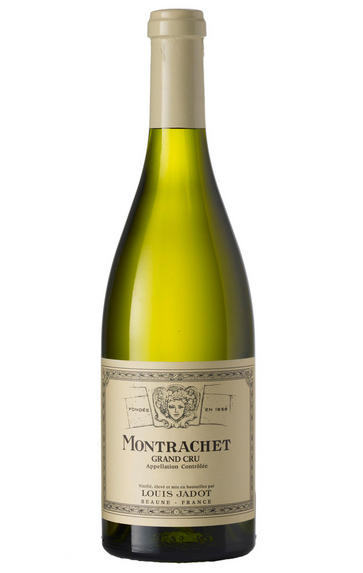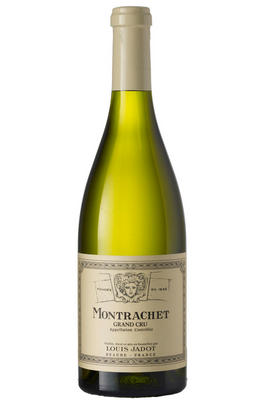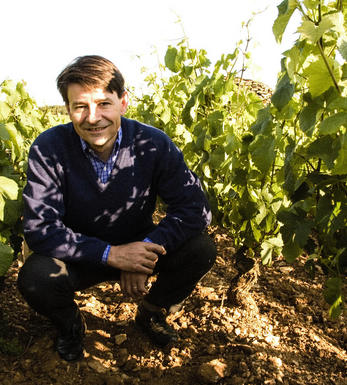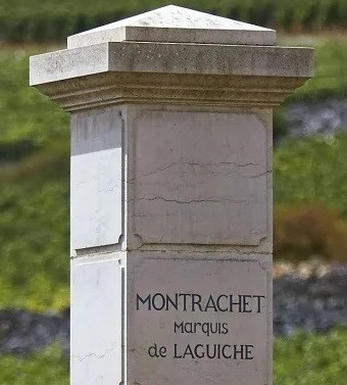
2007 Montrachet, Grand Cru, Louis Jadot, Burgundy

Critics reviews
From a blend of both Chassagne and Puligny.
An almost invisible hint of wood frames stunningly refined if restrained, elegant and ripe floral, green fruit and spice notes with a most interesting touch of violets that can also be found on the rich, full-bodied and delicious flavors that possess ample underlying tension with plenty of finishing punch and vibrancy on the hugely long finish. This is a powerful but not massive Montrachet with buckets of dry extract and the class is obvious as is the impeccable balance of the linear and palate staining backend.
Drink from 2015 onward
Allen Meadows, Burghound.com (July 2009)
Montrachet is situated to the south of the Côte de Beaune, shared between the communes of Puligny-Montrachet and Chassagne-Montrachet (like the Bâtard-Montrachet). It has a perfect south-east exposure ensuring consistency and higher ripeness levels than neighbouring vineyards. The soil is chalky and contains many stones which enables it to drained well and retain heat.
Fragrant with lemon/lime and very faint aromas of spring blossom with spice oak evident but not dominant. More savoury on the palate, oak already beautifully integrated. Creamy textured, firm but giving pleasure already. Dense and concentrated and long without any sense of heaviness.
Julia Harding MW, JancisRobinson.com (June 2009)
From the sites Chassagne side, Jadots 2007 Montrachet smells like an essence of fresh apple and quince laced with brown spices, lily, and narcissus; detonates on the palate with an energetic interplay of fruit, flowers, spices, and chalk; and finishes with an uncanny sense of lift to accompany its creamy richness and sheer extract. This extraordinarily seductive, liquidly floral essence should be worth following for at least a dozen years, but unlike so many of its appellation, one does not have the feeling it would be a crime much less a disappointment to pop a cork already in 2010.
David Schildknecht, Wine Advocate (December 2009)
About this WINE

Louis Jadot
Maison Louis Jadot owns over 60 hectares of vineyard, many of them premier and grand cru, and in Jacques Lardière has one of the most respected winemakers working in Burgundy today, from impressive purpose built cellars on the road to Savigny-les-Beaunes.
The house of Louis Jadot was founded in 1859 though the family had previously been vignerons in the region, acquiring their famous Clos des Ursules in 1826. After the death of the last male members of the family, long-time manager André Gagey took over running the business which was subsequently purchased by the Kopf family, owners of Jadot’s US importers Kobrand. The company is today run by Pierre-Henri Gagey, assisted by head winemaker Jacques Lardière who has been responsible for the company’s wines since 1970.
Recent developments have included the establishment of the tonnellerie Cadus in Ladoix-Serrigny and expansion of the modern winery facilities on the Route de Savigny, with a new white-wine vinification centre completed in 2009. On the vineyard front there have been purchases in the Mâconnais (Domaine Ferret) and the Beaujolais, notably with the Château des Jacques in Moulin-à-Vent and the Château de Bellevue in Morgon.
Jacques Lardière is fascinating to talk to and much prefers to talk about the philosophy of his winemaking than specific techniques. Basically, once healthy grapes have been selected, he wants to let the wine run its own course as much as possible. Every intervention he sees as a closing of a door rather than an opening. So there is no formal pre-maceration, no control over the upper limit of temperature during fermentation, no pumping over because that will accelerate the fermentation process while punching down will not. The wine remains in the vat after the fermentation until the chapeau, the crust of skins and pips, starts to slide down of its own accord, at which time the wine has finished digesting the whole fermentation process.
The wine is then raised in barrel, typically with a good third of new oak across the cellar, perhaps up to 50 per cent in a weaker vintage.
With the whites, Lardière often partially blocks the malolactic fermentation in order to retain acidity and finesse, and the reds are fermented at unusually high temperatures and macerated for up to a month, endowing them with depth of fruit and complexity.
Both the reds and whites are of impeccable quality and reflect the individual terroirs of their respective villages and sites, allied with Lardière`s supreme winemaking skills.
The domaine vineyards belong to various entities: Domaine Louis Jadot itself, Les Héritiers de Louis Jadot, Domaine André Gagey and, on farming contracts, Domaine dela Commaraine and Domaine du Duc de Magenta.
Jasper Morris MW, Burgundy Wine Director and author of the award-winning Inside Burgundy comprehensive handbook.

Le Montrachet
Le Montrachet hails from the Burgundy region of France, specifically from the villages of Puligny-Montrachet and Chassagne-Montrachet in the Côte de Beaune subregion. This wine is produced in the vineyards surrounding Montrachet Hill, which is famed for its limestone-rich soils and ideal microclimate for producing top-quality Chardonnay.
Le Montrachet wines are known for their complexity, depth, and nuance. They often exhibit a wide range of aromas and flavours, which can include notes of citrus, stone fruits, tropical fruits, honey, butter, minerals, and sometimes even hints of hazelnut or toast. These wines tend to be full-bodied with a rich, creamy texture on the palate and are often complemented by vibrant acidity, which provides balance and freshness to the wine.
Le Montrachet wines have exceptional ageing potential. While they can be enjoyable when young, they truly shine with age, developing even more complexity and depth over time. Well-made examples can easily age for decades, evolving into truly extraordinary wines with patience and proper storage.
The concept of terroir, which refers to the unique combination of soil, climate, and vineyard location, is paramount in Burgundy winemaking, and Le Montrachet is a prime example of terroir expression. The wines reflect the specific characteristics of Montrachet Hill and its surrounding vineyards, showcasing the influence of the limestone soils and the region's mesoclimate.

Chardonnay
Chardonnay is often seen as the king of white wine grapes and one of the most widely planted in the world It is suited to a wide variety of soils, though it excels in soils with a high limestone content as found in Champagne, Chablis, and the Côte D`Or.
Burgundy is Chardonnay's spiritual home and the best White Burgundies are dry, rich, honeyed wines with marvellous poise, elegance and balance. They are unquestionably the finest dry white wines in the world. Chardonnay plays a crucial role in the Champagne blend, providing structure and finesse, and is the sole grape in Blanc de Blancs.
It is quantitatively important in California and Australia, is widely planted in Chile and South Africa, and is the second most widely planted grape in New Zealand. In warm climates Chardonnay has a tendency to develop very high sugar levels during the final stages of ripening and this can occur at the expense of acidity. Late picking is a common problem and can result in blowsy and flabby wines that lack structure and definition.
Recently in the New World, we have seen a move towards more elegant, better- balanced and less oak-driven Chardonnays, and this is to be welcomed.


Buying options
Add to wishlist
Description
It is never easy to find the words to describe the wines from such an incredible vineyard as Le Montrachet. Burgundy’s greatest white wine terroir nurtures sumptuous, sensational wines with masses of fruit, elegance and exceptional power. This 2007 has terrific weight in the mouth, leaving a sense of depths of flavour unplumbed while the wine is still so young. This will be majestic indeed but will need time to attain its throne.
Berry Bros. & Rudd
wine at a glance
Delivery and quality guarantee